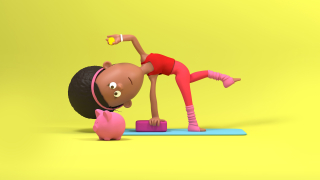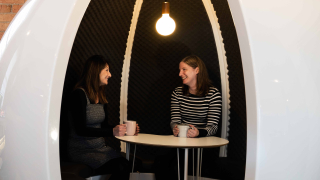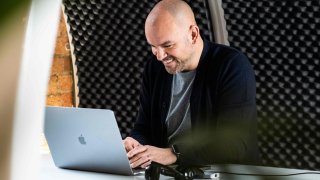
Like everyone at Fluid, I’m fortunate to have my own personal development fund. And for the past couple of years, Paul and I have been making regular(ish) trips to London as we work towards our NN/g qualifications. Why? Well… because these are known as being the absolute best of the best when it comes to web design and UX. And because we get to rub shoulders with digital leaders from many of the worlds’ biggest brands. Here’s a little insight into what I learnt on my last visit.
Day one – The Human Mind and Usability
This course was all about the psychology behind basic human behaviour and thinking. Why is this important for UX I hear you ask? Well, if we can have a clearer understanding of how people think and process information and why they think that way, we can anticipate how users will interact with our websites and digital applications. All in all, it means we can produce designs and user experiences that are research driven and achieve better results.
One of the insights I found particularly interesting on the course was the Gestalt theory of perception. Hold on tight, here’s the science bit. These principles were discovered by psychologists who were trying to understand how people visually perceive the world and decide if certain elements are part of the same group or not. We can use some of these principles in digital design to improve layout and make it more digestible for the user. To better explain it, here’s a couple of design examples…
One of the perception theories is the principle of closure. It refers to how people perceive incomplete objects. Their research discovered that people want to fill in the blanks and complete an object, so it is whole and therefore get a sense of closure. In digital design, we can use this principle to address the common question of ‘how will people know that they have to scroll?’. The principle of closure suggests that people will scroll further down a web page to complete content. An example could be if you placed an image or information that was cut off by the fold line, a user would continue to scroll to complete the content and find a sense of closure. This is also particularly useful in mobile or app design, when we want to encourage users to scroll from left to right. By showing a cut-off image to the left or right if the screen, it will encourage the user to scroll and complete the image. This method can act as a strong signifier instead of relying on arrows or dots and markers that can be missed and are less compelling.
Another point from this course that I found interesting was about memory. We learnt about the differences between short-term memory and long-term memory, and how to get the best out of both in order for users to successfully complete tasks on a website. An interesting example I took away with me was about working memory. Working memory is a form of short-term memory used to store information in order to complete a task. This might be something like inputting a promo code in an online checkout. Short-term and working memory are very accessible but also very limited in capacity to retain information. Phycologist Miller put forward the idea of ‘The Magical Number 7’ (plus or minus two), after he found evidence that most adults can store between 5 and 9 items in their short-term memory.
We can use memory research in our designs to reduce user workload and make it as easy as possible for the user to complete tasks and make a conversion. For example, if the user is in a checkout area of a website and the website is promoting a discount code, we should make sure the code is short (ideally 7 characters) and it is also on the same page as the check out. Another design example could be price comparison tables for different products so they can easily see all the pros and cons of each option without having to jump from one page to another or open multiple tabs. If we present the user with all of the information they need for tasks on the same screen it will improve the chances of them successfully achieving a conversion and minimises working memory and user workload.
Day two - Effective Ideation Techniques for UX Design
This course was all about the design thinking phase of projects and included ideas on how to hold fast-paced ideas generation sessions with multi-disciplinary creative teams. In my experience of working in the design industry, these sorts of sessions have often been reserved for dreaming up the next big thing in disruptive design or big-budget marketing briefs. But this course encouraged design and UX teams to use the same principles to address common everyday design challenges to expand and improve UX practice.
One of the exercises I found particularly beneficial and fun to do was called ‘Opposite Day’. The idea here was to use your design goal and think of ways to achieve the oppositive of the goal. Then once you’ve completely broken it, you think of design solutions to fix it. For example, a design brief could be to improve conversions on a product landing page. We might suggest making the page really long and adding a lot of irrelevant content. We could hide the call to actions to buy the product or make them less obvious. We could remove the price and any information about payment options, so the user has to find this information out for themselves. Then we would look at our bad suggestions and try to suggest good design solutions to fix them.
One of our Fluid values is ‘Ambitious. Because our comfort zone hates us’. We’re always learning, evolving and improving our processes so that we can continue to generate fresh ideas and gain new perspectives. After this session I was really excited to get back into the studio and share my learnings with our team so we could start to implement some of these ideation techniques and ensure that our ideas are creative but essentially user focused.
How this can help your business
We’re now 80% of the way towards achieving our NN/g certification, learning and understanding the best practice in UX direct from the industry experts. By continually developing our UX skills we can help our clients to achieve their digital goals. Get in touch to discuss how we can improve your website usability and in turn maximise conversion performance.







